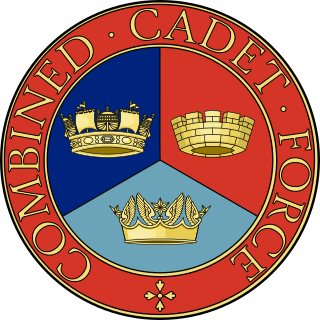
The Combined Cadet Force (CCF) is a youth organisation in the United Kingdom, sponsored by the Ministry of Defence (MOD), which operates in schools, sub divided into Royal Navy, Royal Marines, Army and Royal Air Force sections. Its aim is to "provide a disciplined organisation in a school so that pupils may develop powers of leadership by means of training to promote the qualities of responsibility, self reliance, resourcefulness, endurance and perseverance".

The Army Cadet Force (ACF), generally shortened to Army Cadets, is a national youth organisation sponsored by the United Kingdom's Ministry of Defence and the British Army. Along with the Sea Cadet Corps and the Air Training Corps, the ACF make up the Community Cadet Forces. It is a separate organisation from the Combined Cadet Force which provides similar training within principally private schools.
Volunteer Police Cadets (VPC) is a nationally recognised uniformed police youth organisation which operates in most parts of the United Kingdom. It is one of several cadet youth organisations including the Army Cadet Force, Sea Cadets, Royal Marine Cadets, Air Training Corps and Fire Cadets. The Police Cadets teach young people skills in policing, and some may assist police officers with low-risk activities. The purpose of the VPC is not to recruit police officers of the future, but to encourage the spirit of adventure and good citizenship among its members.
St John Ambulance Australia (also known as St John) (SJAA) is a charitable organisation, dedicated to helping people in sickness, distress, suffering or danger. It is part of an international organisation that consists of eight priories that form the Order of St John. The organisation is sometimes incorrectly referred to as "St John's Ambulance" instead of "St John Ambulance".

Rover Scouts, Rovers, Rover Scouting or Rovering is a program associated with some Scouting organizations for adult men and women. A group of Rovers is called a 'Rover Crew'.
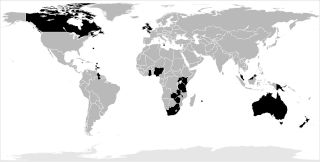
St John Ambulance is the name of a number of affiliated organisations in different countries which teach and provide first aid and emergency medical services, and are primarily staffed by volunteers. The associations are overseen by the international Order of St John and its priories.
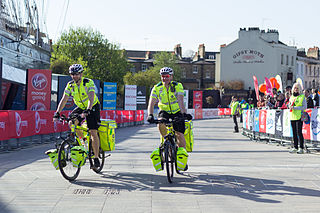
St John Ambulance is a volunteer-led, charitable non-governmental organisation dedicated to the teaching and practice of first aid and the support of the national emergency response system in England. Along with St John Ambulance Cymru, St John Ambulance Northern Ireland, and St John Scotland, it is one of four United Kingdom affiliates of the international St John Ambulance movement.

St. John Ambulance in Canada, or SJA (French: Ambulance Saint-Jean Canada, is a confederation of St John Ambulance Provincial and Territorial Councils under mandate by the "St John Councils Regulations 1975" of the Royal Charter, Statutes and Regulations of the Order of St John. Each Council is governed by a board of directors under Provincial or Territorial incorporating legislation together with the St John Ambulance Priory in Canada, incorporated under the federal Canada Not For Profit Corporations Act. The Priory provides support services to the Councils and manages the Order of St. John in Canada. The Councils deliver the mandate of training and community services and are responsible for their own governance, operations and management.
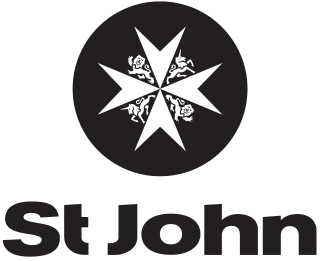
Hong Kong St. John Ambulance is a charitable organisation with a long history stretching back over a century and has been serving the community since 1884. Adhered to its motto, "For Faith, For the Service of Mankind", the organisation is dedicated to providing first aid and ambulance services in emergency, dental care for the handicapped, and courses of instructions on first aid and home nursing for the general public. Notably, Hong Kong St. John Ambulance is the only branch of St John Ambulance to provide free dental services as part of their regular services.
St John Ambulance Ireland (SJAI), previously known as the St John Ambulance Brigade of Ireland, is a charitable voluntary organisation in Ireland. For constitutional reasons it is not a full member association of the Venerable Order of Saint John and the international St. John Ambulance movement, but rather is classed as an "associated body". The organisation is dedicated to the teaching and practice of medical first aid. It is engaged in first aid training to the public, providing first aid and ambulance cover at public events, patient transport and community services.

The Order of Malta Ireland – Ambulance Corps is a voluntary ambulance and first aid organisation operating in Ireland in affiliation with the Sovereign Military Order of Malta, founded in 1938.

St John Singapore is a voluntary secular organisation in Singapore established in 1877 which provides training in First Aid and Home Nursing. It is affiliated with the Order of Saint John based in the United Kingdom. Its ambulance members and nursing members perform voluntary first aid coverage duties during national events and other events. It comprises 3 sub-organisations, namely the St John Brigade Singapore, St John Association Singapore, St John Fellowship Singapore.
Kadet Remaja Sekolah Malaysia is a scout-like movement organised by the Government of Malaysia as a youth organisation.
Hato Hone St John Youth is a cadet-based programme for children and young people aged between five and eighteen. Members who turn eighteen tend to remain involved in leadership roles. St John Youth is closely affiliated with the Order of St John in New Zealand, of which His Majesty King Charles III is the Sovereign Head. St John Youth is divided into two programmes. There is the Penguin Programme for children aged 5–8, and the Cadet Programme for young people aged 8–18. The Youth curriculum focuses on leadership, life skills, and fun, with first aid, drill, and other uniquely-Aotearoa New Zealand aspects central to the programme.

St John Ambulance Cadets is a youth organisation of St John Ambulance founded in England in 1922 for people aged between 10 and 17 to train them in first aid, social actions, wellbeing, communication and other essential skills. As of December 2019, there were 8,071 Cadets in England. Cadets take part in a variety of activities that consist of providing first aid at community events, learning leadership and training skills.

St. John Ambulance of Malaysia is a Malaysian-based, non-profit statutory body dedicated to the works of humanity and charity for the relief of persons in sickness, distress, suffering or danger without any distinction of race, class, colour or creed. With a history stretching back over a century, SJAM forms part of the wider St. John Ambulance, a foundation of the Venerable Order of Saint John with presence in 41 sovereign states, dependencies, autonomies or territories.
St John Ambulance Australia employs the use of ranks, as an organisation with its roots in the military. Its rank structure is based upon that of St John Ambulance in the United Kingdom, while also taking inspiration from the Australian Army.
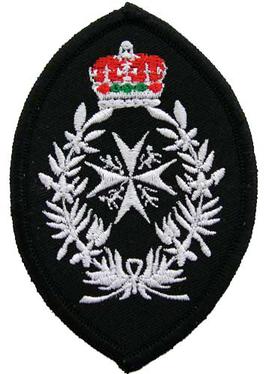
The Grand Prior's Award, also called the Grand Prior Award, named for Grand Prior of the Venerable Order of Saint John, is the highest award that a cadet in the St. John Ambulance Youth Programme can achieve after the Sovereign's Gold Award. The Grand Prior's Award recognises a self-motivated and capable young person's ongoing commitment, compassion, and support. It is recognised and awarded internationally by various branches of the program. The Grand Prior's Award is recognised in many countries, including England and the Islands, Wales, Canada, Malaysia, New Zealand, and Australia.
St. John Ambulance India is the first aid, ambulance and nursing wing of the Indian Red Cross Society. It arose as the local Indian branch of the international St. John Ambulance movement headquartered in the United Kingdom, but in the years since Indian independence it has severed official links with the Order of St John. It has its national headquarters in Delhi and operates as a federation. There are two operational wings often called the Association Wing and the Brigade Wing.

St John Ambulance Northern Territory is a non-profit, charitable organisation providing first aid services and training, urgent care, patient transport, ambulance and other medical services in the Northern Territory. It has served as the primary ambulance service in the Northern Territory since 1966. These services are provided through a combination of paid and volunteer staff. St John NT is funded through a combination of government funding, corporate and private donations and user pays services.

























